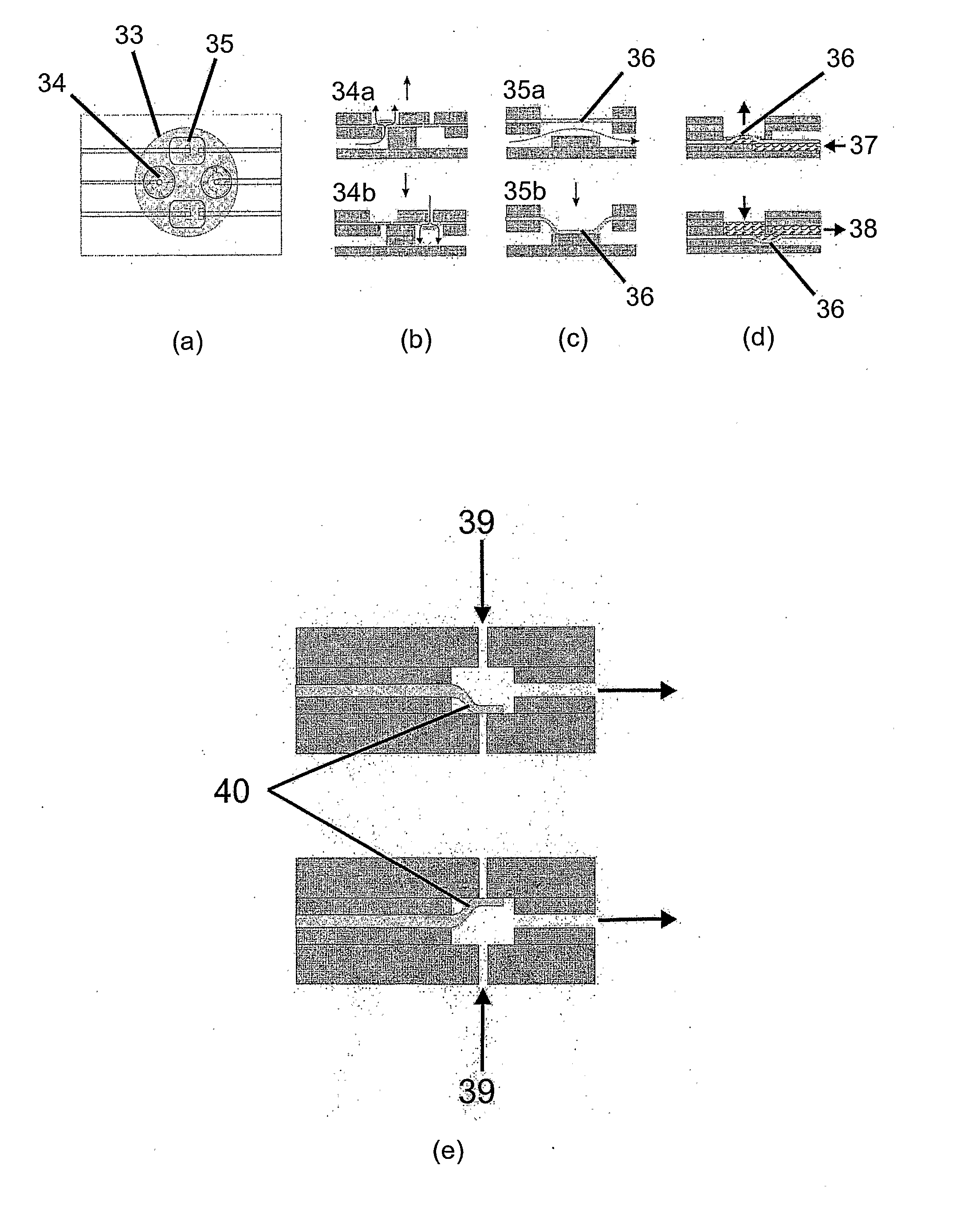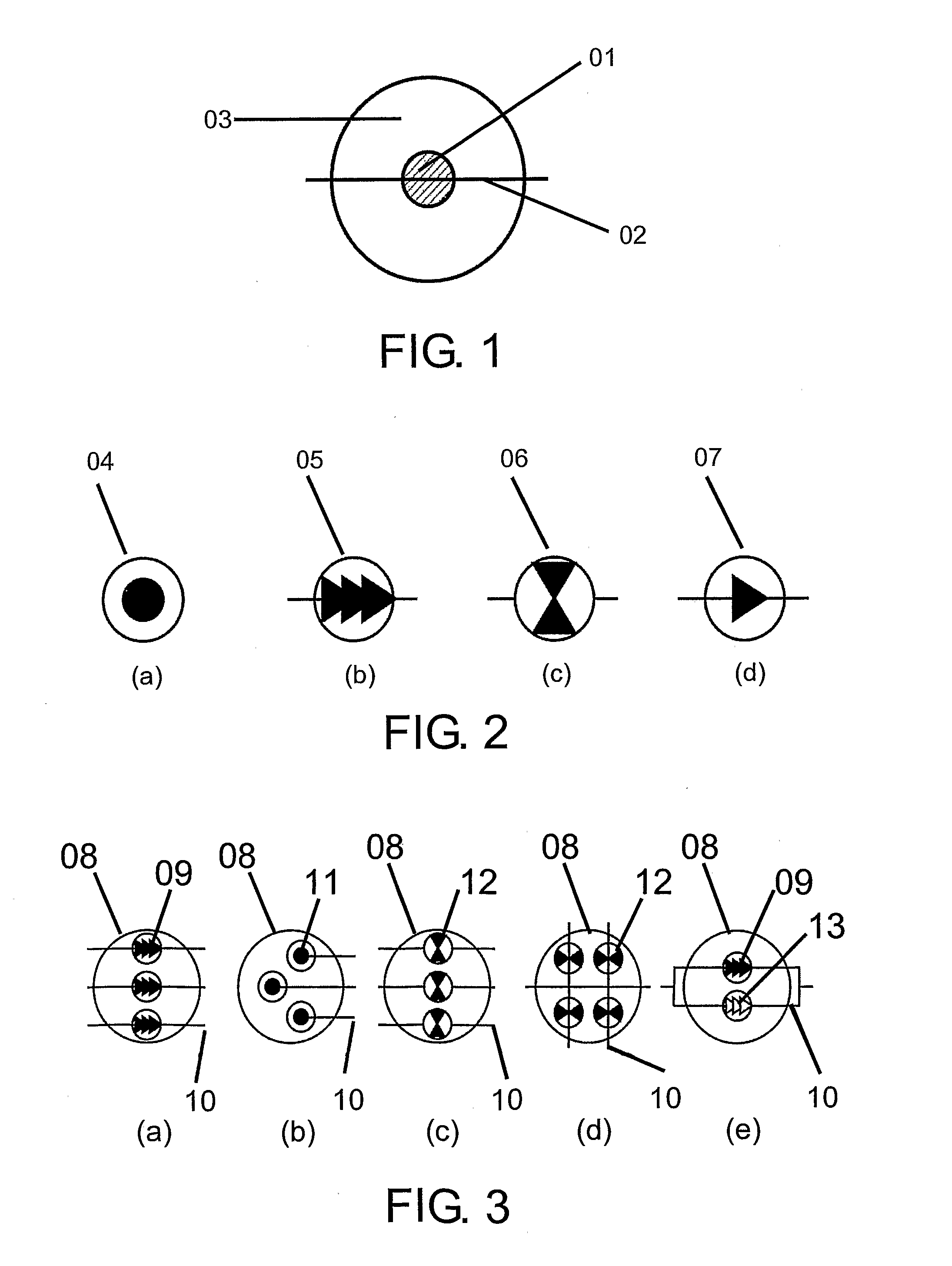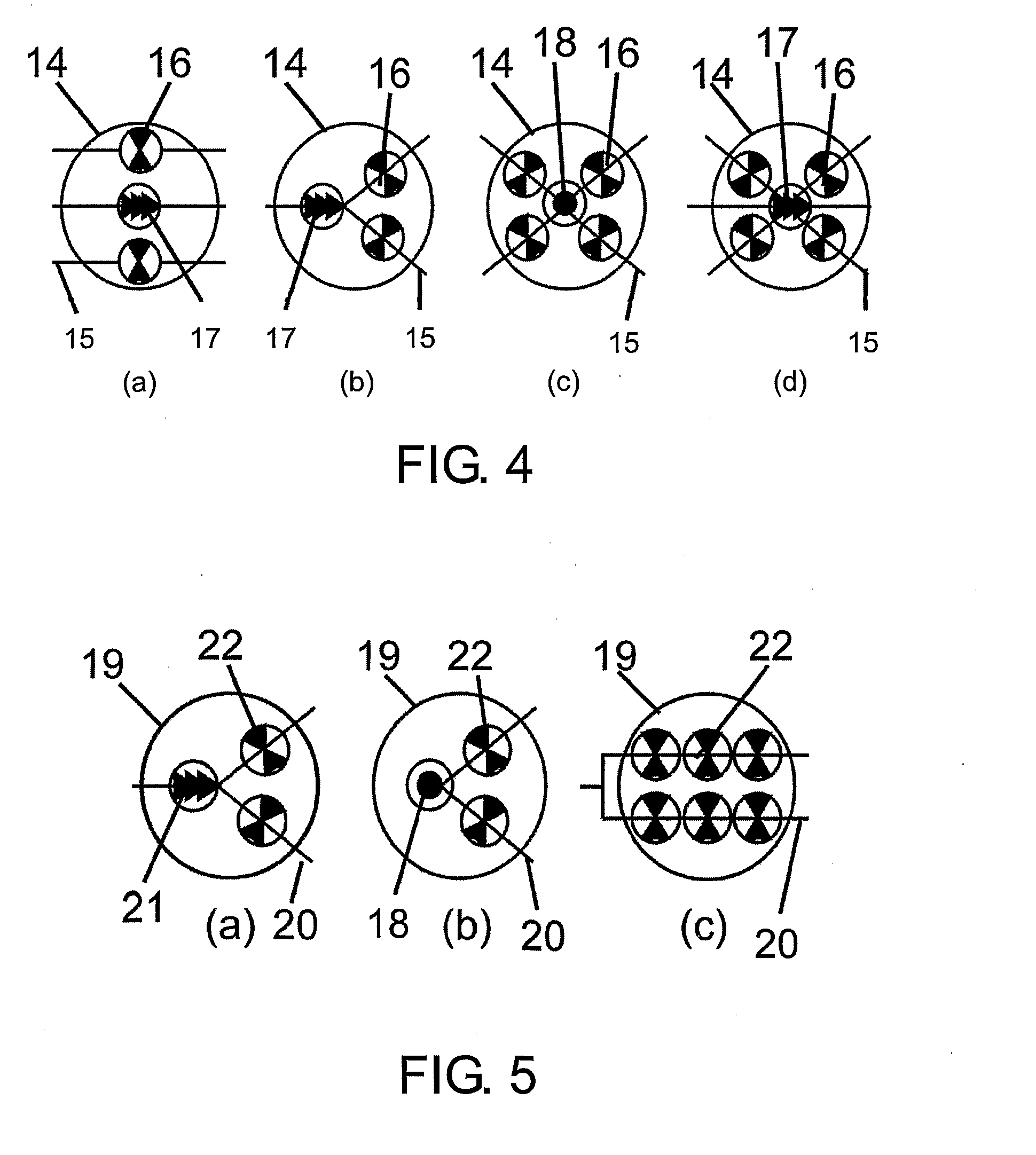Unfortunately, this technique has only
limited capacity for sample introduction in appropriately shaped capillaries.
Electrokinetic flow is another popular technique but is limited in substrate and fluid medium choice, due to
surface charge interactions with the fluid and
joule heating, and use high driving voltages that are potentially dangerous for many portable diagnostic applications.
Electrokinetic flow can also be used to induce flow in connecting channels that do not undergo electrokinetic pumping, see U.S. Pat. No. 6,012,902; however the same electrokinetic limitations still apply to the electro-active region and systems driving
voltage.
However, to date pressure pumps integrated into microdevices have required relatively complex
instrumentation systems to control actuators that operate the micropumps.
In many cases this
instrumentation requirement limits the device's use to that which complies with the size and cost constraints of the supporting
instrumentation.
Another inherent problem in the operation of known devices is the inherent inefficiency and reliability of the fluid-handling operations.
Channels with deformable membranes are prone to leakage due to the need to conform the movable components to the channel dimensions.
Furthermore, complex manifolds and large areas on the microdevice are required for complex fluid manipulation.
In addition, pressure pumps integrated into microdevices have typically involved complex three dimensional geometries with multiple one-way valves that are complex to manufacture and have resulting reliability problems.
However, the overall relative complexity of the structures and requirement for pneumatic operation introduce difficulties with bonding and
interfacing, and their use is restricted to applications where a pneumatic supply can be provided.
This technique is not suited to
mass production due to the requirements of forming microstructures within the
elastomer, i.e.—the proposed multi-step
casting method is a slow batch-based process.
However due to the materials used, and the special
processing requirements, the manufacturing methods are limited to batch-based
semiconductor fabrication processes, which are relatively expensive.
U.S. Pat. No. 6,408,878 discloses a
polymer multi-valve pump that produces a peristaltic type motion by using three or more valves that alternately deform into a fluid channel to give a pseudo traveling wave, but the fabrication is also limited to batch-based
processing.
The devices and methods described in the prior art do not provide a method for small scale pumping, valving, and other fluid manipulation that is efficient, simple to use, small, lightweight, intrinsically reliable or scaleable for high
throughput mass production.
Most of these difficulties arise from the tight dimensional constraints, reduced
path length, and reduced fluid volumes leading to much smaller
signal responses.
Problems with these techniques include: alignment difficulties due to the small fluidic dimensions; the size of the components used; and in cases such as
fluorescence,
signal losses due to the distance from the fluidic source of the focusing
optics and their focusing area.
These are typically expensive fabrication processes that do not lend themselves to high volume manufacture of disposable devices.
However,
silicon based fabrication of disposable microfluidic devices is commercially challenging, particularly in the intrinsically high unit price and significantly low unit volumes with this particular substrate family.
However, a fundamental problem with this technique is the
photon energy losses incurred from multiple reflections and material boundary transitions limiting the size and sensitivity of the fluid detection
cell.
These manifolds are typically machined from a single bulk material and are therefore very limited in their geometry.
This multilayer design introduces
coupling and alignment difficulties when
coupling optical fibers to fluidic circuits.
However, this approach employs separate fabrication processes for each part and introduces alignment or
dead volume difficulties, and adds to both the device's size and the
unit cost.
Furthermore the device is unsuitable for transmission and absorption based measurements as it does not provide a mechanism for recovering or measuring the light characteristics after it has traversed through the sample fluid.
Another limitation is that the
system only provides for detection of point sources (reporters) radiating perpendicular to the
fluidic channel.
This further limits the technique as the
point source signal response is low and there is no ability to increase the signal (and therefore the sensitivity), by concentrating the light.
Due to measurement across the width of the channels this technique is limited in its
signal response in a similar manner to the previous example and further optical losses are encountered as the light passes the different media due to the separation of the light and fluidic channels.
Furthermore there is no method for concentrating the emitted signal from the point sources.
The devices and methods described above in the prior art do not provide a low cost
integrated approach for adequate absorption, transmission, and luminescent detection in microfluidic devices.
The
disadvantage of this kind of indication is that the instrument
software is still required to contain all the program information for the device's operation.
This is typically only done for major revisions or upgrades, as frequent distribution of
upgrade media and the user action required to install the upgrades is considered problematic.
A further
disadvantage of providing individual upgrades for new instrument applications is the development cost in providing the new application routines and relevant installation
package.
This method of
upgrade also tends to introduce further possibilities for program error or
system hang-ups due to the increase in the inherent complexity of the
software code and the potential incompatibilities caused by numerous revisions and incomplete sequence history.
In addition, allowing an instrument to be upgraded this way leaves it open to unauthorized “hacking” which introduces further reliability and warranty problems for the manufacturer or reseller.
Furthermore, there are extra logistical concerns relating to cost and technical problems with the delivery of the
upgrade service, whether it be a physical disk or remotely by methods including email and
the internet.
A
disadvantage of the prior art method of keeping the full program coding on the instrument is the inherent security risk of containing all the instrument's operational protocols in one program.
Placement of the instrument's program operation entirely in the instrument, means that
reverse engineering is potentially easier, allowing unauthorized usage of the instrument and or operation with
third party inserts or even duplication of an entire instrument.
Unfortunately, these methods do not stop a skilled operator from accessing the onboard application program to operate the instrument or use foreign inserts.
 Login to View More
Login to View More  Login to View More
Login to View More 


